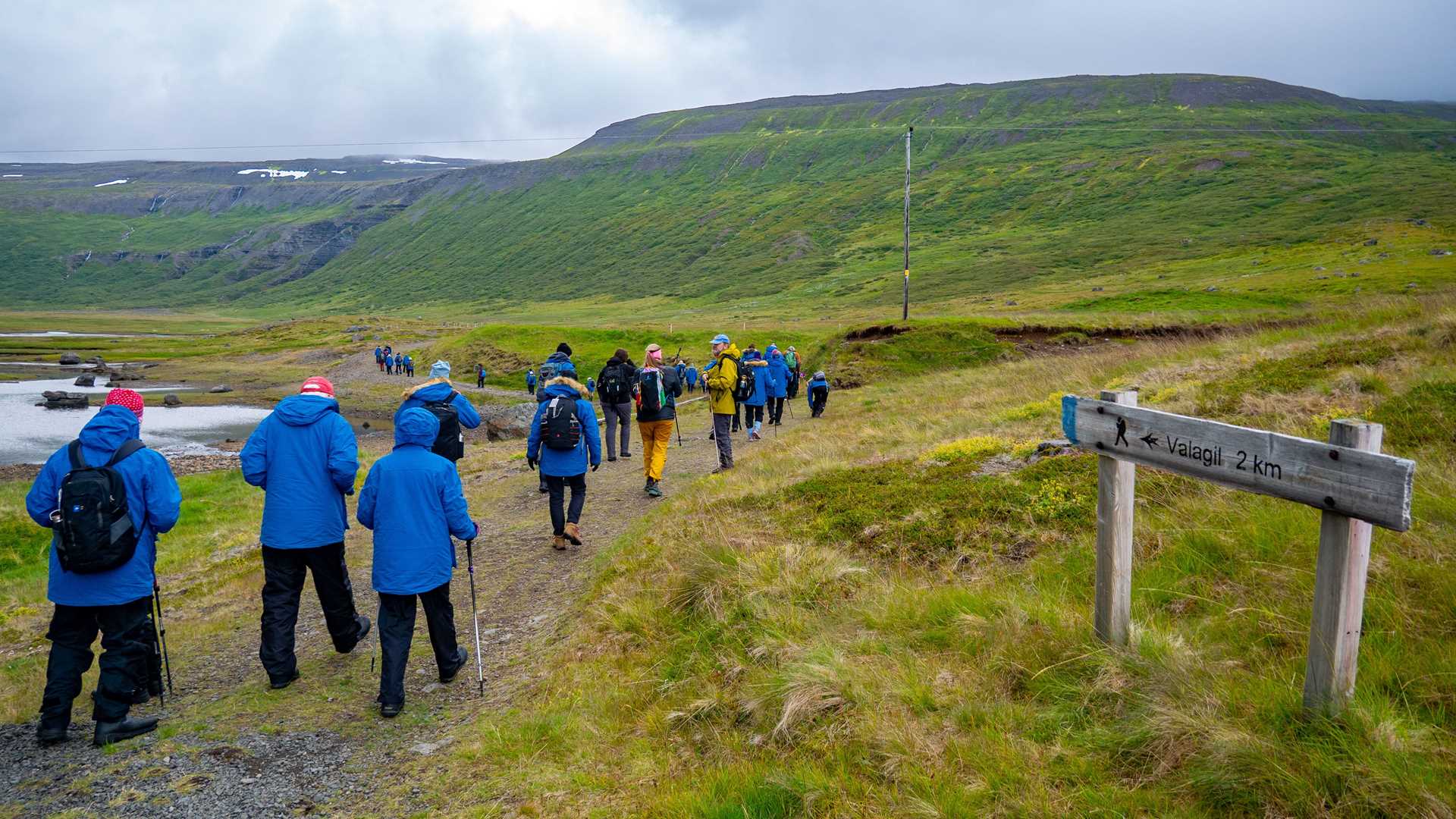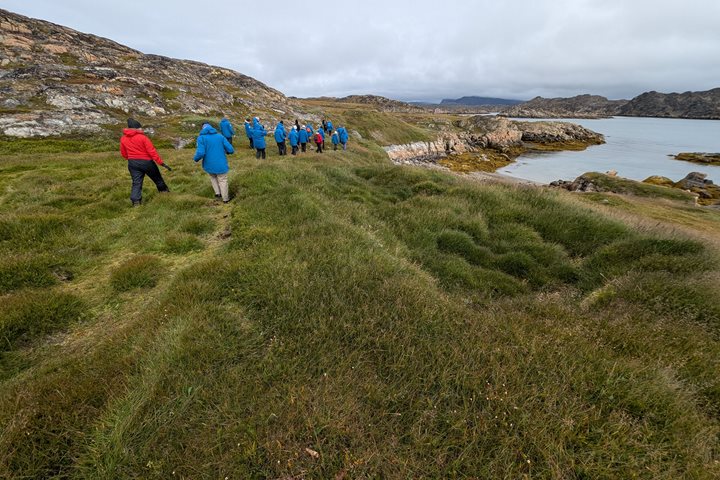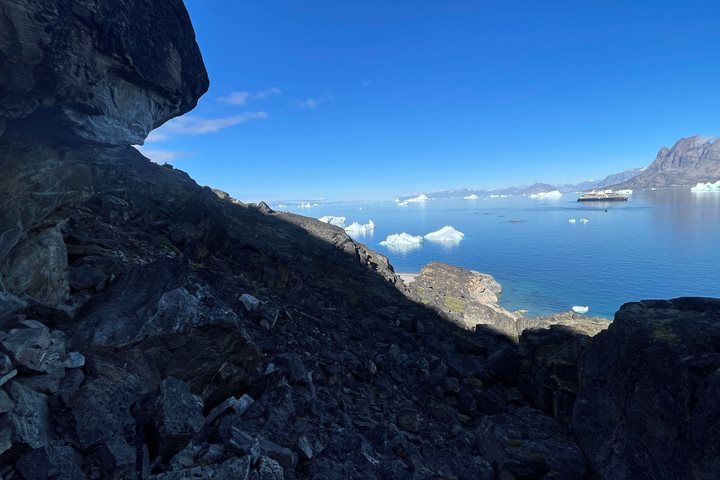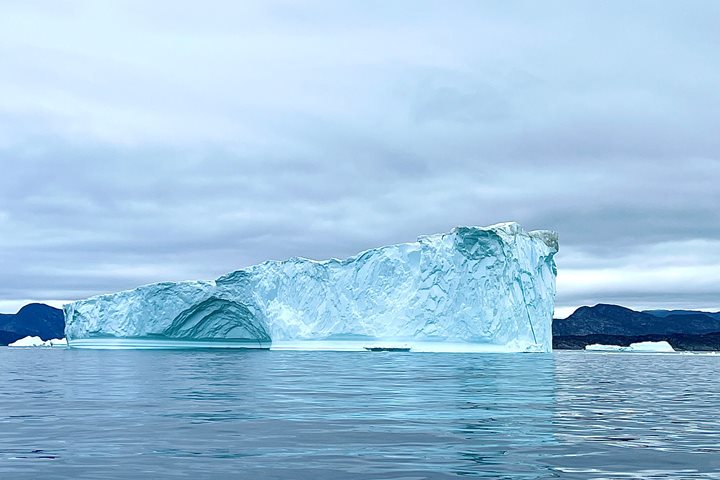Today, guests explored the spectacular Westfjords at Iceland's northwest corner. The Westfjords consist of brooding, flat-topped mountains that are bisected by canyon-like fjords carved by ice during the last glaciation. This is the only major part of Iceland where the landscape is defined by ice, rather than volcanism. Our base for the day was the town of Isafjordur, built on a rare bit of flat ground. The town sprang up in the early 1800s around a safe harbour with rich resources of fish and whales close at hand.
In the morning, guests divided into three parties. One group set out on foot to explore the history of the town as revealed by decade-by-decade changes in architecture. The dock area (Dokkan) was a key part of the early settlement. As available flat land was used up, infilling created new areas, including the modern wharf where National Geographic Explorer tied up. Walkers had a chance to sample locally brewed beer, named for Westfjord’s geographical features.
A second tour, titled Fjords and Flowers, bussed along the narrow road that hugs the fjord’s edge. At one location, the fjord wall was so steep that road construction was impossible. Instead, engineers blasted a six-kilometer-long tunnel that connected the Isafjordur area to the outside world. Guests on this tour also experienced a garden of cultivated flowers, the oldest bookshop in Iceland, a coffee stop with a special Icelandic form of mini-donuts, and a musical duet in a church.
The final morning tour headed to Valagil, where a deep valley receives cascading water from the high surrounding cliffs. The main falls are visible from the valley mouth, but the exploration party reached a waterfall gem: a narrow torrent tumbling down a crevasse in the rock wall, hidden from view until hikers are upon it.
In late afternoon, expedition members visited Vigur Island, home to major colonies of Atlantic puffins, black guillemots, and arctic terns. But Vigur is best known for its eider ducks, which come ashore to lay eggs in nests lined by down, which they pluck from their breasts. For generations, this down has been sustainably harvested after the ducklings hatch. The down is cleaned and processed to make an insulation material of amazing lightness and warmth.







